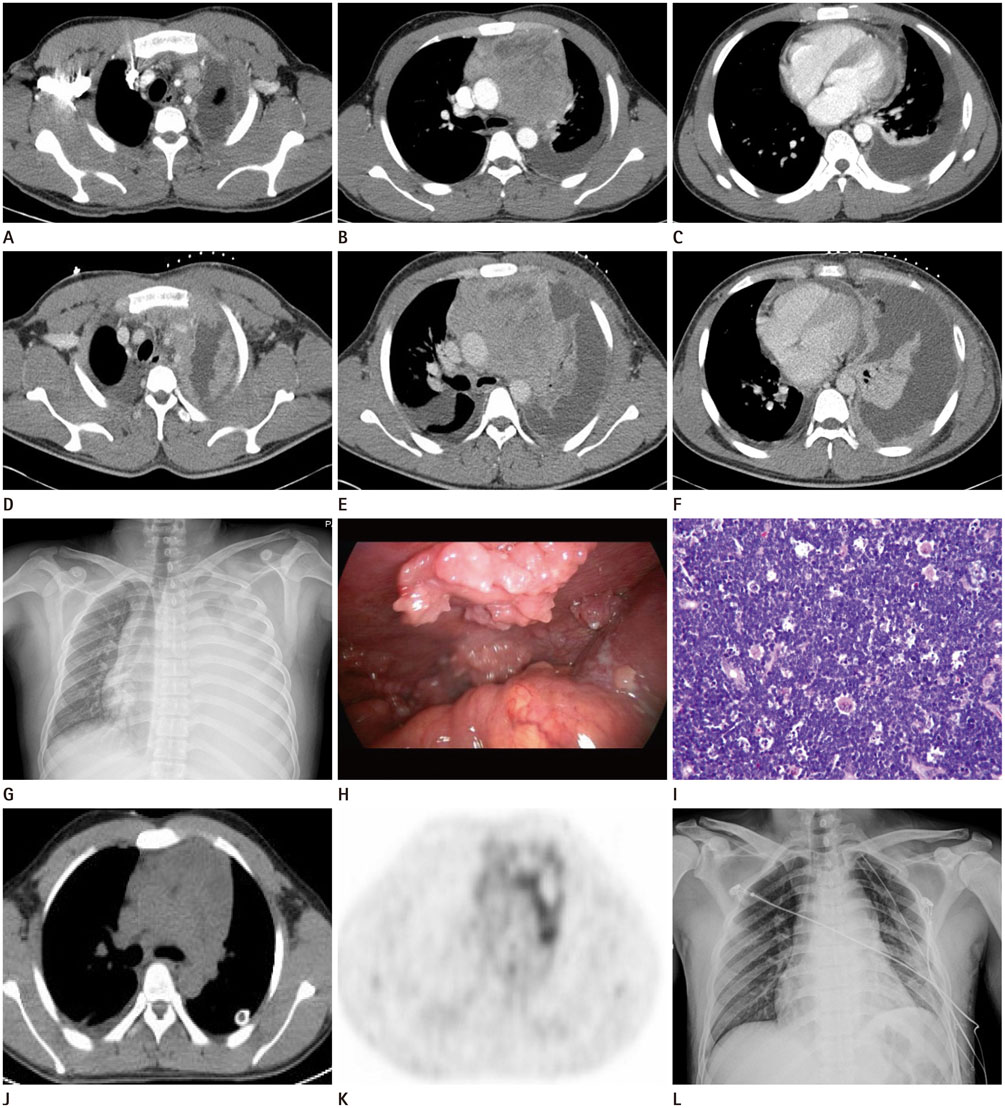J Korean Soc Radiol.
2016 May;74(5):308-312. 10.3348/jksr.2016.74.5.308.
Rapid Progression of Mediastinal Tumor within a Few Days: A Case Report of T Cell Lymphoblastic Lymphoma
- Affiliations
-
- 1Department of Radiology, Seoul Medical Center, Seoul, Korea. ykradio@medimail.co.kr
- 2Department of Hematooncology, Seoul Medical Center, Seoul, Korea.
- 3Department of Pathology, Seoul Medical Center, Seoul, Korea.
- 4Department of Thoracic Surgery, Seoul Medical Center, Seoul, Korea.
- KMID: 2164826
- DOI: http://doi.org/10.3348/jksr.2016.74.5.308
Abstract
- T-cell lymphoblastic lymphoma is a highly aggressive tumor derived from lymphocyte of the thymus, which accounts for 2% of non-Hodgkin's lymphoma. The disease occurs most commonly in adolescent and young adult males. It often results in respiratory emergency because of high proliferation rate. In this case, we confirmed the rapid progression of T-cell lymphoblastic lymphoma through the chest CT scan with one week interval. Three days of empirical chemotherapy resulted in substantial reduction of mediastinal mass, pleural thickening and pleural effusion.
MeSH Terms
Figure
Reference
-
1. Han X, Kilfoy B, Zheng T, Holford TR, Zhu C, Zhu Y, et al. Lymphoma survival patterns by WHO subtype in the United States, 1973-2003. Cancer Causes Control. 2008; 19:841–858.2. Hoelzer D, Gökbuget N. T-cell lymphoblastic lymphoma and T-cell acute lymphoblastic leukemia: a separate entity? Clin Lymphoma Myeloma. 2009; 9:Suppl 3. S214–S221.3. Thomas DA, Kantarjian HM. Lymphoblastic lymphoma. Hematol Oncol Clin North Am. 2001; 15:51–95. vi4. Sweetenham JW. Highly aggressive lymphomas in adults. Hematol Oncol Clin North Am. 2008; 22:965–978. ix5. Willemssen F, Colla R, Vandevenne JE, Palmers Y. Mediastinal T-cell lymphoblastic lymphoma. JBR-BTR. 2002; 85:172–173.6. Tateishi U, Müller NL, Johkoh T, Onishi Y, Arai Y, Satake M, et al. Primary mediastinal lymphoma: characteristic features of the various histological subtypes on CT. J Comput Assist Tomogr. 2004; 28:782–789.


